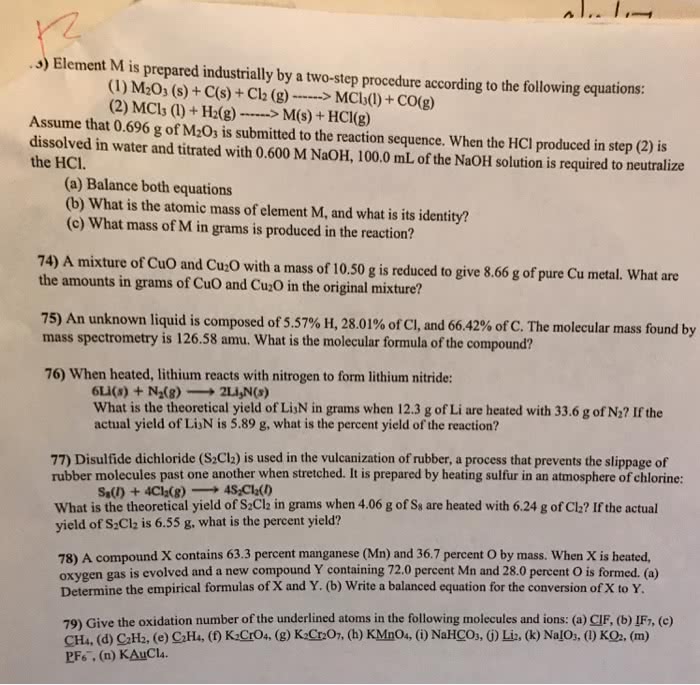e)Although they were formerly called the inert gases, at least the heavier elements of Group 8 do form relatively stable compounds. For example, xenon combines directly with elemental fluorine at elevated temperatures in the presence of a nickel catalyst. Use table 1 and table 2. Xe(g) + 2 F2(g) â XeF4(s) What is the theoretical mass of xenon tetrafluoride that should form when 163 g of xenon is reacted with 164 g of F2? g= What is the percent yield if only 156 g of XeF4 is actually isolated? f)When elemental copper is strongly heated with sulfur, a mixture of CuS and Cu2S is produced, with CuS predominating. Cu(s) + S(s) â CuS(s) 2 Cu(s) + S(s) â Cu2S(s) What is the theoretical yield of CuS when 31.3 g of Cu(s) is heated with 52.5 g of S? (Assume only CuS is produced in the reaction.) g= What is the percent yield of CuS if only 6.08 of CuS can be isolated from the mixture? % yield= g)The gaseous hydrocarbon acetylene, C2H2, is used in welders' torches because of the large amount of heat released when acetylene burns with oxygen. 2 C2H2(g) + 5 O2(g) â 4 CO2(g) + 2 H2O(g) How many grams of oxygen gas are needed for the complete combustion of 250. g of acetylene? g=
e)Although they were formerly called the inert gases, at least the heavier elements of Group 8 do form relatively stable compounds. For example, xenon combines directly with elemental fluorine at elevated temperatures in the presence of a nickel catalyst. Use table 1 and table 2. Xe(g) + 2 F2(g) â XeF4(s) What is the theoretical mass of xenon tetrafluoride that should form when 163 g of xenon is reacted with 164 g of F2? g= What is the percent yield if only 156 g of XeF4 is actually isolated? f)When elemental copper is strongly heated with sulfur, a mixture of CuS and Cu2S is produced, with CuS predominating. Cu(s) + S(s) â CuS(s) 2 Cu(s) + S(s) â Cu2S(s) What is the theoretical yield of CuS when 31.3 g of Cu(s) is heated with 52.5 g of S? (Assume only CuS is produced in the reaction.) g= What is the percent yield of CuS if only 6.08 of CuS can be isolated from the mixture? % yield= g)The gaseous hydrocarbon acetylene, C2H2, is used in welders' torches because of the large amount of heat released when acetylene burns with oxygen. 2 C2H2(g) + 5 O2(g) â 4 CO2(g) + 2 H2O(g) How many grams of oxygen gas are needed for the complete combustion of 250. g of acetylene? g=




